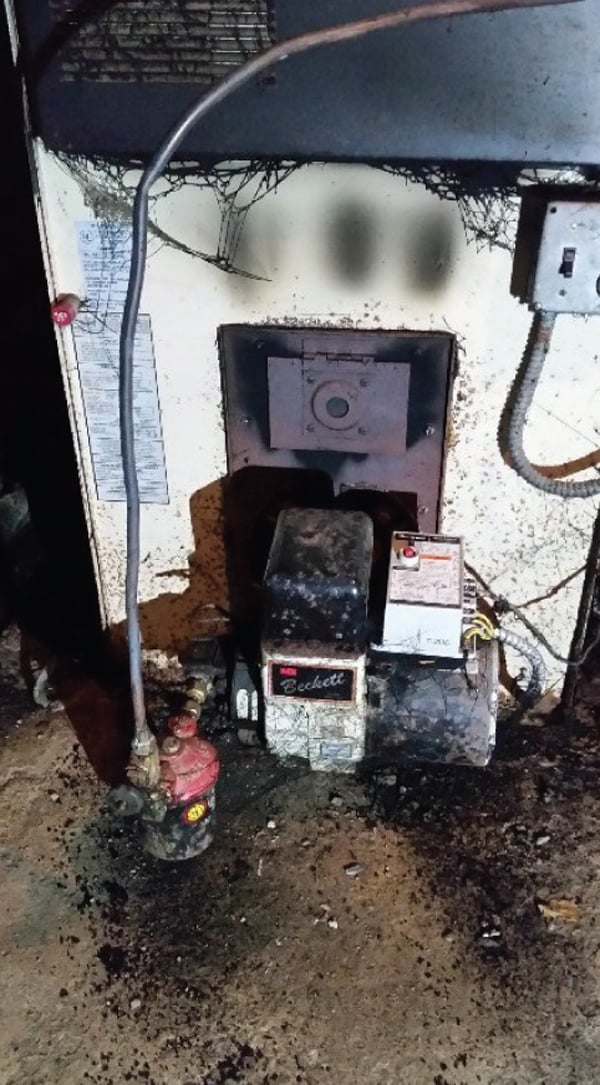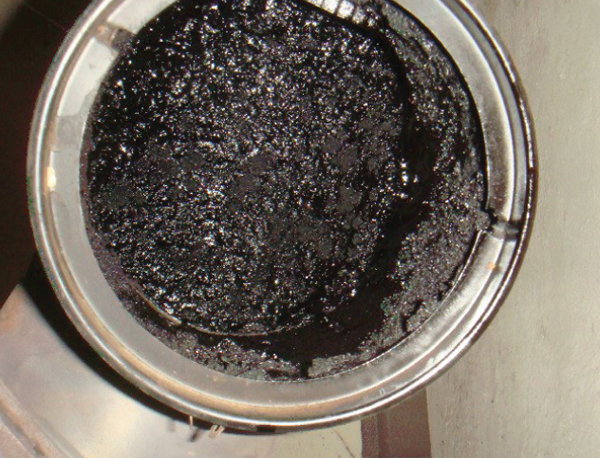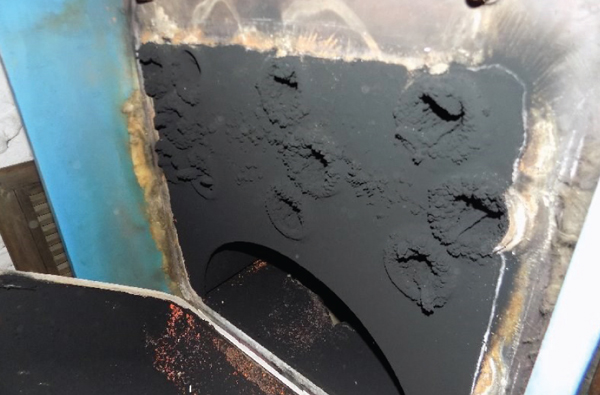As the weather gets colder and homeowners start up their heating systems for the first time in months, insurance carriers see an influx of claims for the failure of furnaces and boilers.
One frequent issue that can be both messy and potentially dangerous is a phenomenon known as a “puffback.”
A puffback is a release of smoke or soot that occurs when a boiler or furnace misfires. It is important that adjusters and insurance carriers understand what a puffback is and what causes one to occur. Not only are they expensive (and occasionally dangerous), but they are often caused by a non-covered cause of loss.
Related: 15 preventable homeowners' insurance claims and how to avoid them

Damage caused by a puffback to an oil-fired furnace. (Photo: HVACi)
What is a puffback?
A puffback occurs when a furnace or boiler does not ignite properly and allows oil or gas vapors to build up within the ignition/combustion chamber. When it does finally ignite, the excess fuel in the chamber causes this puffback scenario. The result can be anywhere from a small amount of smoke to a minor explosion, depending on how much fuel has accumulated in the chamber.
Puffbacks can occur in both oil and gas furnaces and boilers, but are much more common in oil-fired equipment. Oil furnaces and boilers require more maintenance than their gas-fired counterparts, presenting more opportunities for the ignition process to be hindered if the system is not properly maintained. Additionally, oil is less likely than gas to dissipate, leading to larger average explosions. Forced air, oil-fired heating system puffbacks tend to be the messiest, as oil creates more soot than gas, and the ductwork for the forced air system can spread that soot to every room in the home.
Related: The invisible killer: Carbon monoxide safety tips for your home and car

Clogged flue pipe that lead to a puffback in an oil-fired boiler. (Photo: HVACi)
What causes a puffback?
Regardless of fuel type, furnaces and boilers should have annual system maintenance. Puffbacks generally occur due to a lack of this routine maintenance or because of age-related wear and tear. Specific causes can include:
-
A leak at or near the combustion chamber can allow the fuel to build up in the combustion chamber and can cause a puffback to occur upon ignition.
-
A clogged exhaust or chimney that is obstructed by dirt, dust, fuel residue, rust or corrosion could prevent combustion gases from properly venting out of the furnace. This can cause an internal pressure irregularity that can eventually lead to a puffback, due to an incorrect ratio of fuel to air.
-
A cracked heat exchanger (similar to a clogged exhaust or chimney) prevents the combustion gases from properly venting out the furnace and results in an internal pressure irregularity that can cause a flame roll out. The resulting improper combustion process allows excess fuel to enter the ignition chamber and potentially lead to a puffback when ignition occurs.
-
Manually resetting the system too often when it fails to ignite may cause unburned fuel to accumulate in the chamber and can lead to a puffback once ignition finally occurs.
-
A damaged oil fuel nozzle, such as one that is clogged or cracked, may cause the oil to spray unevenly and result in insufficient fuel for the burners to ignite. The nozzle will continue to attempt to spray and allow excess oil to enter the burner over time. When the oil eventually ignites, a puffback can occur.
-
A clogged burner full of dirt, dust, fuel residue, rust or corrosion can cause a misfire and allow excess fuel to build up in the combustion chamber. This may eventually lead to a puffback when the fuel at last ignites.

Puffback soot damage within the heat chamber of a boiler. (Photo: HVACi)
Want to continue reading?
Become a Free PropertyCasualty360 Digital Reader
Your access to unlimited PropertyCasualty360 content isn’t changing.
Once you are an ALM digital member, you’ll receive:
- All PropertyCasualty360.com news coverage, best practices, and in-depth analysis.
- Educational webcasts, resources from industry leaders, and informative newsletters.
- Other award-winning websites including BenefitsPRO.com and ThinkAdvisor.com.
Already have an account? Sign In
© 2024 ALM Global, LLC, All Rights Reserved. Request academic re-use from www.copyright.com. All other uses, submit a request to [email protected]. For more information visit Asset & Logo Licensing.








